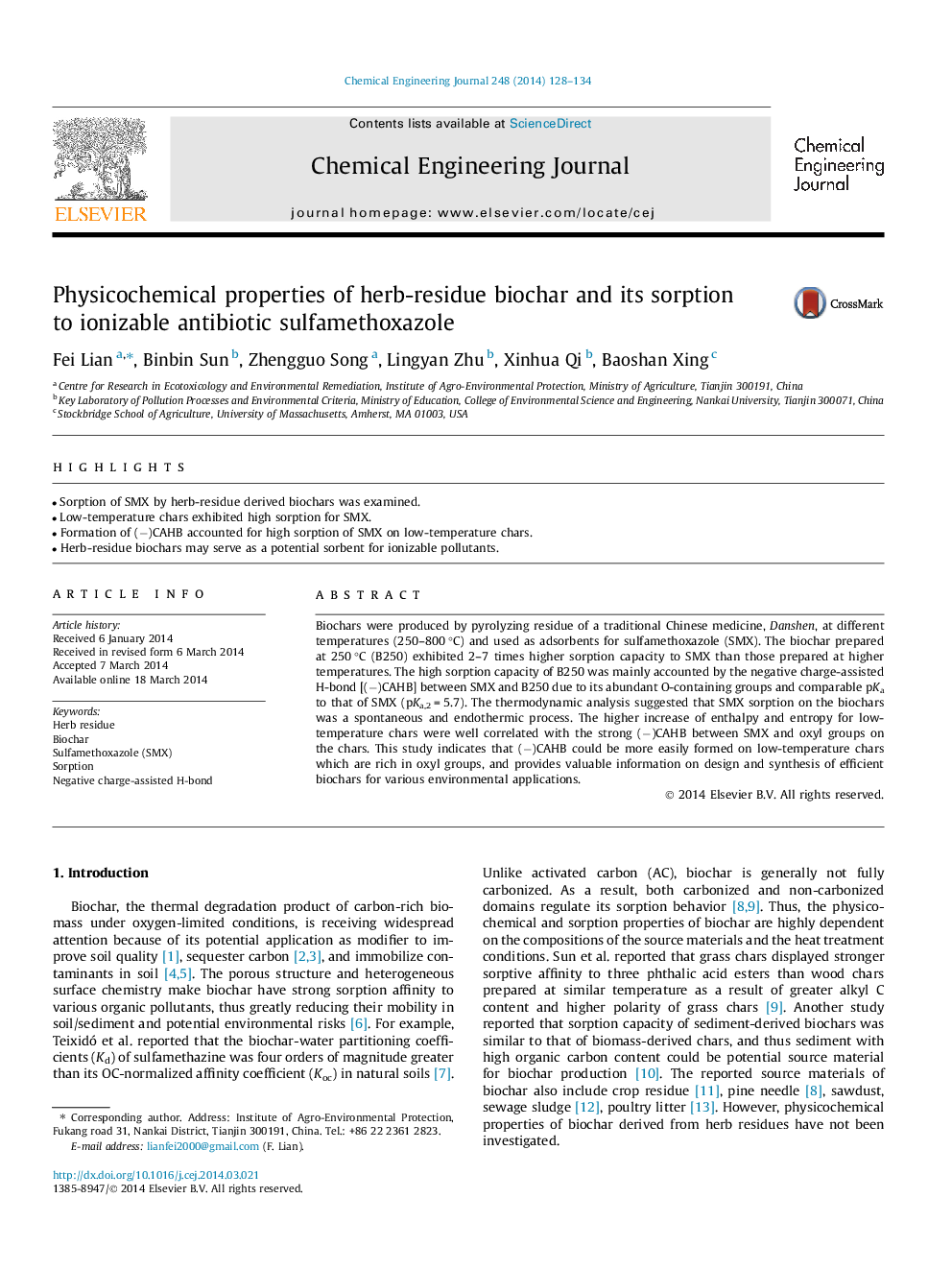| Article ID | Journal | Published Year | Pages | File Type |
|---|---|---|---|---|
| 147482 | Chemical Engineering Journal | 2014 | 7 Pages |
•Sorption of SMX by herb-residue derived biochars was examined.•Low-temperature chars exhibited high sorption for SMX.•Formation of (−)CAHB accounted for high sorption of SMX on low-temperature chars.•Herb-residue biochars may serve as a potential sorbent for ionizable pollutants.
Biochars were produced by pyrolyzing residue of a traditional Chinese medicine, Danshen, at different temperatures (250–800 °C) and used as adsorbents for sulfamethoxazole (SMX). The biochar prepared at 250 °C (B250) exhibited 2–7 times higher sorption capacity to SMX than those prepared at higher temperatures. The high sorption capacity of B250 was mainly accounted by the negative charge-assisted H-bond [(−)CAHB] between SMX and B250 due to its abundant O-containing groups and comparable pKa to that of SMX (pKa,2 = 5.7). The thermodynamic analysis suggested that SMX sorption on the biochars was a spontaneous and endothermic process. The higher increase of enthalpy and entropy for low-temperature chars were well correlated with the strong (−)CAHB between SMX and oxyl groups on the chars. This study indicates that (−)CAHB could be more easily formed on low-temperature chars which are rich in oxyl groups, and provides valuable information on design and synthesis of efficient biochars for various environmental applications.
